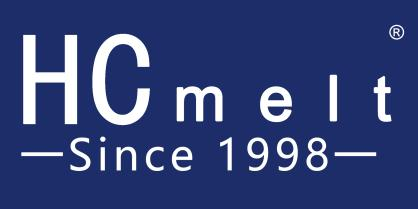

As a leading hot melt adhesive manufacturer, we’re often asked: How are these versatile adhesives made? From packaging to electronics, HMAs bond materials swiftly and strongly. Here’s a behind-the-scenes look at their production process, raw materials, and key quality controls.
hot melt adhesives are 100% solid thermoplastics that melt when heated (typically 120–180°C) and solidify upon cooling, creating instant bonds. Unlike water- or solvent-based adhesives, HMAs contain no volatile organic compounds (VOCs), making them eco-friendly and efficient.
Fast setting time (seconds to minutes)
Strong adhesion to diverse substrates (plastics, wood, fabrics)
No curing/drying required
Recyclable and low odor
HMAs are formulated from three core components, each tailored for specific performance:
Base resins (e.g., EVA, SBS, APAO, Polyamide) provide cohesion strength and flexibility.
Example: Ethylene-vinyl acetate (EVA) is popular for its balance of tack and adhesion.
Rosins, terpenes, or hydrocarbon resins increase "stickiness" (adhesion to surfaces).
Pro Tip: Tackifier choice affects open time (how long the adhesive stays workable).
Waxes (paraffin, microcrystalline) lower viscosity for easier application.
Additives include antioxidants (prevent degradation), plasticizers (flexibility), and pigments (color).
Engineers customize recipes based on:
Substrate type (e.g., cardboard vs. metal)
Application method (spray, bead, or film)
Performance needs (high heat resistance, flexibility, etc.).
Raw materials are weighed and loaded into a heated mixer (150–200°C).
The blend is stirred under nitrogen to prevent oxidation.
Homogeneity is critical—uneven mixing causes weak spots.
Molten adhesive is filtered to remove impurities.
It’s then extruded into pellets, blocks, or films for easy handling.
The adhesive is cooled rapidly to stabilize its properties.
Final products are packed in moisture-proof bags or drums.
To meet industrial standards, we test:
Melt Flow Index (MFI): Viscosity at working temperatures.
Softening Point: Temperature at which the adhesive flows.
Peel Strength: Bond durability under stress.
Fun Fact: A 1% deviation in tackifier content can alter adhesion by up to 15%!
| Industry | Use Case | Preferred HMA Type |
|---|---|---|
| Packaging | Carton sealing | EVA-based (fast-setting) |
| Automotive | Interior trim | Polyamide (heat-resistant) |
| Electronics | Wire tacking | Low-temperature APAO |
Modern HMAs are designed for:
Recyclability: Compatible with plastic recycling streams.
Bio-based materials: Some formulations use plant-derived tackifiers.
Energy efficiency: Low melting points reduce energy use.
hot melt adhesives blend chemistry and engineering to solve bonding challenges. As manufacturers, we optimize every step—from raw material selection to eco-friendly packaging—to deliver reliable, high-performance adhesives.
Interested in a custom HMA formulation? [Contact our R&D team today!]